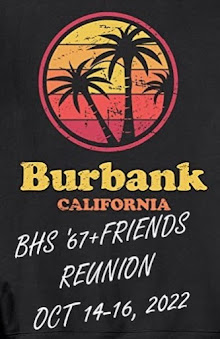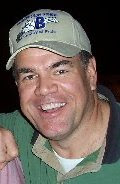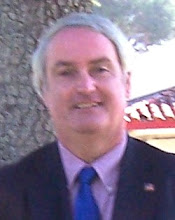http://www.loti.com/fifties_music/cowabunga_surfs_up.htm
Cowabunga! Surf's Up!
by Pat Jacobs
1960s California was one of the most desirable places to be and live in. There was a thriving economy of both white and blue-collar jobs, and that year-long, summer climate.
After World War II and during the late 1950s-early '60s, people came in groves for sun, fun, and jobs. In 1940, the state's population was about 7 million. By 1950, it was 10.6 million, due to many Texans and Oklahomans who came seeking wartime employment in government factories. By 1960, California's population grew to more than 15.8 million. By late 1962, there were more than 17 million and still growing. And a new indigenous sound was born; bright, bouncy, "sunny" music about beaches, bikinis (and the girls in them), and recreational activities.
One of these activities widely sung about was surfing.
Originally the sport of Hawaiian kings, it was introduced to California at the turn of the 20th century. The Gidget movies greatly popularized the sport. Actor Cliff Robertson, who was in the 1959 version, was one of the first people (along with a business partner) who started a surfboard business (At
the time, there wasn't a local manufacturing company. All the movie's surfboards were shipped in from Hawaii.)
Later, two other companies, Hobie Surfboards and Sweet's Surfboards, further popularized the sport by making an important innovation: They replaced the traditional heavy board with a lightweight material that could be handled more easily. And surfing took off.
A new sub-culture grew out of this, with its own vocabulary, fashion, print media, and of course, the music. (At the time, surfers were predominantly male teenagers and young adults.)
Pendleton shirts, sandals, white, tight, somewhat short Levis, and baggies (very large, loose boxer-style shorts) were the standard and epitome of
surfer cool.
Some surfer terms were: kooks and gremlins-beginners, the poorly skilled, or phonies bunnies-girls going over the falls-being caught in a breaking wave woodie-station wagon with wooden sides Ho-Daddy-an intruding wise guy soup-foaming water near the beach big guns-surfboards designed for riding tall waves hot-doggers-surfers and hot-dogging-performing tricks, among many others. (Didn't they also say "Cowabunga! Surf's Up!"? Or have I been watching too many Beach Party movies?)
There were new magazines such as Surfer and Surfer Illustrated. Early surf movies were Slippery When Wet (1960) and Barefoot Adventure(1962). And then there was the fun, hilarious Beach Party movies with Frankie Avalon and Annette Funicello, and a somewhat regular ensemble cast that included : go-go dancer Candy Johnson, singer Donna Loren, pretty boy Aaron Kinkaid, "bonehead" Jody McCrea, sweet, earnest Deborah Walley and Yvonne Craig, Bobbie Shaw (I think she was the Nordic-looking blonde with the big chest who often played variations of "Inga from Sweden." Yah Yah!), and Harvey Lembeck, who played Eric Von Zipper, leader of the Rat Pack, (the motorcycle gang or bikers, another Californian subculture) who regularly threatened the surfers. They always stole the show for me.
Groups such as The Hondells, The Pyramids, and Dick Dale and The Del-Tones were often featured, as well as "name" acts like Lesley Gore, Stevie Wonder, and James Brown, backed by The Famous Flames.
Between August 1963-April 1966, there were seven of these pictures made by American International; Beach Party (1963) was the first. Others included Muscle Beach Party, Bikini Beach (both 1964), and Beach Blanket Bingo.
Similar variations were: The Girls On The Beach, Ski Party, Dr. Goldfoot and The Bikini Machine (with Vincent Price!), Pajama Party, Ghost In The Invisible Bikini, How To Stuff A Wild Bikini, When The Girls Meet The Boys, Get Yourself A College Girl, Endless Summer, and Beach Ball (featuring The Supremes singing "Surfer Boy"! It was actually a rather good song.) Wasn't Ride The Wild Surf a serious movie about surfing?
Surf music originated with Dick Dale and The Del-Tones. Dale (actually born in Beirut, Lebanon as Richard Monsour) grew up in Southern California, becoming a surfer himself. He was also a guitar player who recorded on his own label. Dale worked closely with Leo Fender, the manufacturer of the first mass-produced electric guitar, to improve the sound and to develop the reverberation unit that would give surf music its unique sound. Dale wanted to convey the surfing experience as much as possible through the music.
In the summer of 1961, Dale and his group launched the new sound during weekend dances at the Rendezvous Ballroom in Balboa, California. And the surfers came. Word-of-mouth spread and by late 1961, attending a Dick Dale dance was the thing to do (if you were into surfing).
Dale and the Del-Tones became famous statewide; Dale also became known as the King of Surf Guitar. In Sept. 1961, "Let's Go Trippin" was a no. 1 California hit. Other hits were "Surfbeat", "Surfing Drums", "Shake 'n' Stomp", and "Miserlou" (1962). By early 1963, Capitol Records recorded the group. Dale was also featured in Beach Party. Before the duo of Jan and Dean, there was Jan and Arnie (Ginsburg) who had a Top 10 hit (no. 8) in 1958 with "Jennie Lee". (Was this the same Arnie Ginsburg who became a famous DJ?)
Jan Berry and Dean Torrence became friends in junior high, and started out singing usual teen pop. In October 1959, they had the Top 10 hit "Baby Talk" and appeared on American Bandstand. Other songs followed: "Linda", "Heart and Soul", "There's A Girl", and "We Go Together", among others. With the help of the Beach Boys, Jan and Dean became surf music icons (and yes, they both did surf!) At a show in late 1962, the duo and the group ended up performing together, out of mutual admiration. The crowd loved it.
From this event, the duo included a surf song on their upcoming album, which would be called Jan and Dean Take Linda Surfing. Lou Adler was their record producer on this project (and manager). And The Beach Boys are featured on this album. During the session, Brian Wilson sang the opening line of a new song, which he offered to Jan and Dean. The duo added lyrics and recorded it.
The opening line? "Two girls for every boy!" The song, of course, was the no. 1 smash "Surf City" (1963). In 1964, "Ride The Wild Surf" (from the movie) and "Sidewalk Surfin" became Top 20 hits.
Other surf and California-oriented hits were: "New York's A Lonely Town"- The Tradewinds (1965, no. 32) "Surfer's Stomp" (1962, no. 31), "Out Of Limits" (a no.3 smash in 1963) and the delightful "Balboa Blue" (1962) by The Marketts, who were session musicians. (Member Tommy Tedesco went on to become the most recorded guitarist in rock history, no joke. He probably played on, if not half, at least a third of every '60s hit you've ever heard. He played the opening licks on "Fun, Fun, Fun" and "I Get Around". He was on the ukelele on "Raindrops Keep Falling On My Head". He was also on countless TV themes and movie soundtracks.) "California Sun"- The Rivieras (a no. 5 smash in 1964) " Sunshine, Lollipops, and Rainbows"- Lesley Gore (1965, no.13.) Why did I include this? Because it has the happy, "sunny" sound and was featured in Ski Party. And also "California Nights" (1967, no. 16) and the follow-up, "Summer and Sandy". "California My Way"- The Fifth Dimension (This was actually an album cut and may have been a B side. Also "California Soul" (1969, no.25). "California Dreamin"- The Mamas and The Papas (a no. 4 smash in 1966) "Wipe Out"- The Surfaris (a no.2 smash in 1963) "Pipeline"- The Chantays (a no. 4 smash, also '63) "Surfin' Bird"- The Trashmen, who were from the Midwest (no.4, also '63) "Your Baby's Gone Surfin"- Duane Eddy "Surfin With The Astronauts"- The Astronauts, from Colorado "I Live For The Sun" and "Andrea"- The Sunrays "Sandy"- Ronny and The Daytonas (The last two songs aren't about surfing or California per se, but I think they just have a nice "sunny summer" sound to them.)
There were also other surf-inspired albums: "Surfin Bongos", "Surfin With The Shadows", "Surf Mania" by The Surf Teens, and there was even "Surfin' With Bo Diddley", which was a big surprise to him! His record label had put this together without his knowledge.
By late 1963, surf music had become a national craze; by the mid-'60s, the wave had risen to its peak. And then there were The Beach Boys. They became the epitome of the genre. (Mention surf music to anybody; what's the first thing they usually say? I rest my case.)
This group brought the music to national and international prominence. All California natives, group members Brian Wilson, his brothers Carl and Dennis Wilson ( I think Dennis was the only one who actually surfed), cousin Mike Love, and Al Jardine, a friend, began performing in 1961 as Kenny and The Cadets, or Carl and The Passions, but usually as The Pendletones. (Remember the shirts?)
The group combined the surf music sound with great harmonies. Their dominating, and at times, abusive, father, Murray Wilson, nevertheless helped them to secure a recording contract. Mr. Wilson recommended Al Jardine in response to music publisher Hite Morgan's request for new songwriters. Jardine appeared at the 1961 session with the entire band. Morgan heard "Surfin" for the first time and liked it. Within two hours, the song was recorded. The record was released in December 1961, became a no. 1 California hit and reached no. 75 on the national charts. But in the process, the Pendleton's' name was changed on the record label to the Beach Boys, unbeknownst to them.
After a brief dry run (the group's original record label had financial problems and closed), Murray Wilson, now the group manager, shopped around and was finally able to get a new contract with Capitol Records. And they were very impressed.
In 1962, "Surfin' Safari " became a Top 20 hit (no.14). An album of the same name reached the Top 35. In early 1963, the "Surfin' Safari" album was released, and the title single became the group's first Top 10 hit.
The Beach Boys had arrived. In late 1963, they had a no. 7 smash "Surfer Girl", and in 1964, enjoyed their first no. 1, "I Get Around." Numerous other California and surfing-themed hits followed ("All Summer Long", "California Girls", and "Dance, Dance Dance", to name just a few). Brian Wilson and company were the new Kings of Surf.











My brother (Shel Singer BHS '65) was in a neighborhood band called the Ar-tones, which used to play surf music. I heard them doing Pipeline over and over. Once they played at a dance in the gym at John Muir, and I remember standing on the floor looking up at them on the bandstand, marveling that my brother was up there.
ReplyDeleteThe songs I hear from that time remind me of those dances - standing around talking with friends and trying to get up the nerve to ask a girl to dance. So innocent...and so memorable.
Thanks Alan for sharing... yeah, I remember those jr high dances... also remember collecting surfboard decals like Hobie, bleaching a small strip of my hair blond and wanting so badly to learn how to surf which never happened... sweet days of youth! Now my 13 year old granddaughter is wanting to learn to surf while my daughter is on the Hobie fishing team, just started a kayak fishing charter business and both she and her husband have stand up paddle boards (SUP)!
ReplyDeletehttp://captlinda.blogspot.com/
http://www.captlinda.com/
Wow Alan, did you bring back memories!! I was the drummer in the Artones. Besides Shel, there was Mike Schoenfeld and another guitar play whose name escapes me (This happens when you are in your 60s). I remember those junior high dances; we each received $5.00 (big money in those days). Ah, those were indeed the days!!!
ReplyDelete